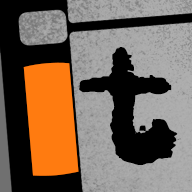Hey guys, got a few questions. (I'm sorry if some of them seem stupid)
First off, when you're recording audio to a separate recorder, and, say you film all day, then go home to off load, assuming you're not using timecode, when you off load all your video and audio files, how do you know which audio file goes with which video files... I know I've seen behind the scenes stuff from movies where all the info is on the slate, and said out loud before the director says action, but are there other ways to do this?
Second, I know that Pro Tools is industry standard for pretty much anything audio oriented, but my question, are there other DAWs that are useable to obtain professional results? (For instance, I currently use Ableton Live for audio production).... Basic question boils down to, if I'm serious about specializing in the audio side of filmmaking, do I need to learn Pro Tools?
Lastly, I've been researching around trying to put together a consumer/prosumer audio set up to start working with, and what I've found is as follows.
Shotgun mic-
http://www.bhphotovideo.com/c/product/747422-REG/rode__ntg_2_complete_shotgun_microphone.html
Hypercardioid mic-
http://www.bhphotovideo.com/c/product/867157-REG/avantone_pro_ck1_ck_1_small_capsule_fet_pencil.html
Recorder-
http://www.bhphotovideo.com/c/product/967366-REG/zoom_h6_handy_recorder_with.html
Headphones-
http://www.bhphotovideo.com/c/produ..._d40fs_professional_enhanced_bass_studio.html
Are there any items on this list that jump out as poor choices?
Also, I've looked at field mixers on BH, and I'm questioning whether I need one with the H6 just starting out... I know Sound Devices makes high quality mixers with super quiet pre's however, as of now, they are out of my price range, and I suspect a lot of the lower price mixers are more geared towards music production, where, even if the preamps are high quality, they are still noisier than what will be useable for filmmaking.
For anyone curious, my background in other areas of audio... I've been doing sound reinforcement for 10 years (not huge scale) and for the past 2 years, I've been tinkering with home recording, again, using Ableton software.
Thanks for any help,
Marshall H.
First off, when you're recording audio to a separate recorder, and, say you film all day, then go home to off load, assuming you're not using timecode, when you off load all your video and audio files, how do you know which audio file goes with which video files... I know I've seen behind the scenes stuff from movies where all the info is on the slate, and said out loud before the director says action, but are there other ways to do this?
Second, I know that Pro Tools is industry standard for pretty much anything audio oriented, but my question, are there other DAWs that are useable to obtain professional results? (For instance, I currently use Ableton Live for audio production).... Basic question boils down to, if I'm serious about specializing in the audio side of filmmaking, do I need to learn Pro Tools?
Lastly, I've been researching around trying to put together a consumer/prosumer audio set up to start working with, and what I've found is as follows.
Shotgun mic-
http://www.bhphotovideo.com/c/product/747422-REG/rode__ntg_2_complete_shotgun_microphone.html
Hypercardioid mic-
http://www.bhphotovideo.com/c/product/867157-REG/avantone_pro_ck1_ck_1_small_capsule_fet_pencil.html
Recorder-
http://www.bhphotovideo.com/c/product/967366-REG/zoom_h6_handy_recorder_with.html
Headphones-
http://www.bhphotovideo.com/c/produ..._d40fs_professional_enhanced_bass_studio.html
Are there any items on this list that jump out as poor choices?
Also, I've looked at field mixers on BH, and I'm questioning whether I need one with the H6 just starting out... I know Sound Devices makes high quality mixers with super quiet pre's however, as of now, they are out of my price range, and I suspect a lot of the lower price mixers are more geared towards music production, where, even if the preamps are high quality, they are still noisier than what will be useable for filmmaking.
For anyone curious, my background in other areas of audio... I've been doing sound reinforcement for 10 years (not huge scale) and for the past 2 years, I've been tinkering with home recording, again, using Ableton software.
Thanks for any help,
Marshall H.



 Maybe the audio guys can tell you the how/why).
Maybe the audio guys can tell you the how/why).  ) will do the syncing before they edit. The dialog editor(s) usually get the film after it's been cut. I always ask for all of the alt DX (DX from the unused takes) and any wild DX that was done on-set, although DX wilds are very rare on indie projects.
) will do the syncing before they edit. The dialog editor(s) usually get the film after it's been cut. I always ask for all of the alt DX (DX from the unused takes) and any wild DX that was done on-set, although DX wilds are very rare on indie projects.






